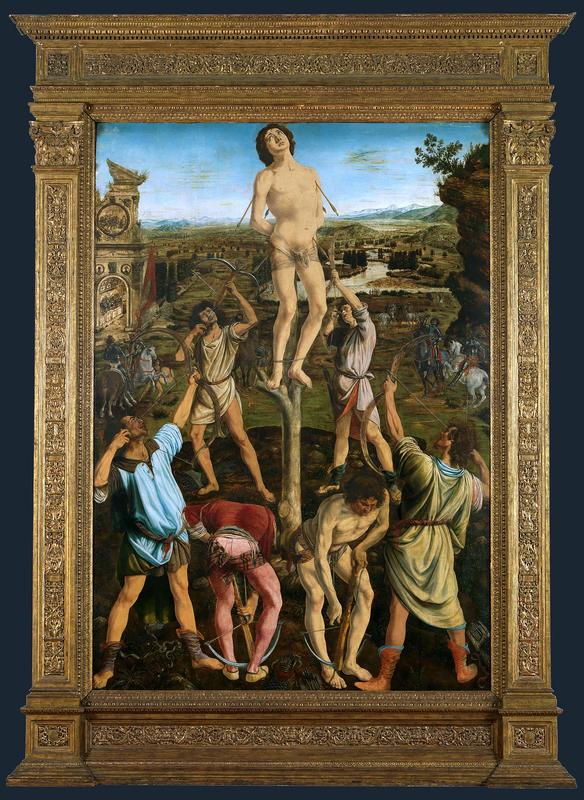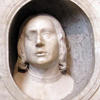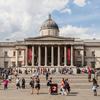More about The Martyrdom of Saint Sebastian

Contributor
Before Leonardo da Vinci's Vitruvian Man became one of the most famous anatomical images, and one of the first non-Christian memes, in Europe, the Pollaiolo brothers were wowing people with their knowledge of anatomy in The Martyrdom of St Sebastian.
The two artist siblings, much like the Anguissola sisters, influenced each other. In the literature of the last five hundred years, busloads of experts bicker about which brother painted The Martyrdom of St Sebastian. The only real evidence we have as to which brother did the work, if they didn't collaborate on it, is totally subjective, like an episode of "Fake or Fortune?" It seems more honorable to give them both credit, but then there's the unscholarly possibility that they actually wouldn't have cared that much, and that's why they didn't make it clear.
Papa Pollaiolo was a poulterer, raising and slaughtering chickens, so that's where the brothers got their last name. Rather than continue the family business of butchery, the brothers spent their lives making Christian images of people slaughtering each other over differing interpretations of scripture. The brothers had a workshop together where Antonio specialized in engraving, especially in bronze, as well as all the other plastic arts of the time. Piero worked on painting projects with Antonio, but also painted things on his own.
Giorgio Vasari, a sort of don of art critics at the time, gives a controversial opinion ascribing the painting to Antonio alone, based on the idea that it resembles Antonio's engravings, such as the one showing ten naked dudes fighting, like a pornographic WCW match. Antonio dug that one so much that put his full name on it, so whenever we remember him we'll think of those sweaty naked dudes.
In his text Memoriale, Albertini says that, in fact, the Martyrdom is Piero's work alone, while Morelli says that they're both kind of right and kind of wrong, in that Antonio did the design and Piero the painting. Maybe the brothers were just trying to share the papal money and get along, and it's the scholars who came along later and obsessed over who owns what.
Saint Sebastian was very popular in those days, partly because Christians trusted that he had the power to intercede against the plague, due to the similar appearance of arrow-wounds and plague-boils. Keep that in mind next time you're in plague country, and don't forget your creepy beak-like plague doctor mask, full of dried lavender flowers.
Sources
- Adams, Laurie Schneider. Italian Renaissance Art. London: Routledge, 2018.
- Blashfield, Edwin Howland. Lives of Seventy of the Most Eminent Painters, Sculptors and Architects, Volume 2. New York: Scribner, 1911.
- Bule, Steven. Verrocchio and late Quattrocento Italian sculpture. Firenze: La Lettere, 1992.
- Hartt, Frederick, and David G. Wilkins. History of Italian Renaissance Art. Upper Saddle River, NJ: Prentice Hall, 2002.
- Partridge, Loren W. Art of Renaissance Florence, 1400-1600. Berkeley: UC Press, 2009.
- Ricks, Christopher, and Jim McCue. The Poems of T. S. Eliot Volume I: Collected and Uncollected Poems. London: Faber & Faber, 2015.
- Woltmann, Alfred Friedrich Gottfried Albert. History of Painting, Volume 2. New York: Dodd, Mead, & Co., 1894.
Featured Content
Here is what Wikipedia says about Martyrdom of Saint Sebastian (Pollaiuolo)
The Martyrdom of Saint Sebastian is a large altarpiece by the brothers Antonio and Piero del Pollaiuolo, commissioned by the Florentine Pucci family and now in the National Gallery, London.
Check out the full Wikipedia article about Martyrdom of Saint Sebastian (Pollaiuolo)












